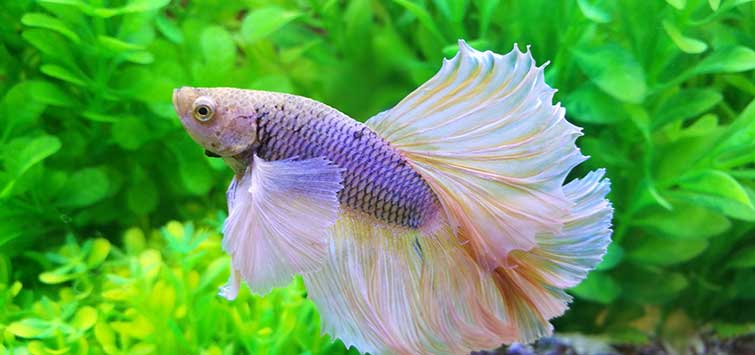Exactly How to Breed Betta Fish Successfully: Specialist Strategies and Insights for Hobbyists Seeking To Broaden Their Betta Collection
Breeding Betta fish needs a nuanced understanding of genetics and environmental conditions, making it important for hobbyists to come close to the procedure with both persistance and treatment. Producing an ideal breeding environment, selecting the right pairs, and observing the intricacies of their courtship behaviors are fundamental steps that can considerably affect the outcome. The subsequent treatment of the fry is crucial for guaranteeing their healthy and balanced development. As we discover these key parts, it becomes clear that successful breeding is not nearly the preliminary pairing yet encompasses a wider approach that benefits mindful consideration.
Understanding Betta Fish Genetics
Recognizing the genes of Betta fish is essential for successful reproduction, as it affects traits such as color, fin shape, and habits. Betta fish show a varied array of colors and patterns, mainly determined by their genetic makeup. The main genetics responsible for coloration consist of the "B" genetics for blue, "D" genetics for red, and the "C" gene for shade intensity. Breeders can manipulate these qualities by picking certain moms and dad fish that exhibit desired characteristics.
Along with coloration, fin morphology is another substantial facet of Betta genes (betta fish). The sizes and shape of fins are influenced by various genetics, consisting of those that establish whether the fins are short, long, or veil-shaped. Understanding these genetic variations aids dog breeders predict the phenotypic outcomes of their spawn
In addition, behavior characteristics such as aggression and territoriality can likewise be affected by genes. These behaviors play an essential function in the breeding procedure, as they can affect generating success and the general personality of the resulting fry. By thoroughly recognizing these genetic concepts, breeders can make enlightened decisions, inevitably improving their breeding programs and accomplishing preferable results.
Preparing the Breeding Environment
Developing an optimal reproduction environment is crucial for the successful recreation of Betta fish. The first step in preparing this setting is to choose an ideal breeding storage tank, preferably ranging from 5 to 10 gallons. This dimension allows for enough swimming space and the establishment of regions. The tank must be equipped with a heating unit to keep a stable temperature in between 78 ° F and 80 ° F, which is important for encouraging spawning habits.
Following, consider making use of a sponge filter or an air rock to provide gentle water flow without developing solid currents that can emphasize the fish. It is important to set up plants or breeding cones to offer hiding spots and promote comfort for the woman during the spawning process. Floating plants, such as Java moss or water sprite, can likewise produce a much more natural surroundings while helping with bubble nest building by the male.
Before introducing the breeding pairs, ensure the water is conditioned and totally free from damaging chemicals, such as chlorine or hefty metals. betta fish. Routine water modifications must be carried out to preserve ideal water high quality, enhancing the chances of successful reproduction. With these prep work in position, the reproducing atmosphere will support the health and wellness and wellness of both Betta fish
Choosing Breeding Pairs
Choosing the right reproduction pairs is crucial for attaining successful Betta fish recreation. Healthy Betta fish exhibit vivid colors, clear eyes, and energetic habits.
Temperament is an additional essential factor to consider, as Betta fish are understood for their aggressive nature. It is suggested to choose a man and female that show compatible personalities to lessen stress throughout the breeding procedure. A calm man can motivate a smoother courtship, while a lady that is also aggressive may interrupt the process.
Hereditary background additionally plays a substantial function in the top quality of the children. Reproducing fish that are genetically diverse can lower the threat of hereditary health problems and enhance the total vigor of the fry. It is useful to look into the lineage of both the man and woman, concentrating on desirable traits such as fin kind, shade patterns, and size.
The Reproduction Refine
The breeding procedure of Betta fish requires cautious preparation and interest to information to ensure a successful outcome. At first, it is vital to prepare an appropriate reproduction tank, preferably a 5-10 gallon fish tank with a temperature maintained at 78-80 ° F. The container must be outfitted with a heater, filter (preferably sponge type to prevent solid currents), and a lot of aquatic plants for the female to conceal.
As soon as the environment is established, introduce the chosen breeding pair to the storage tank, enabling them to adapt. Observe their actions; the man will certainly show sophisticated courtship routines, including flaring his fins and developing a bubble nest. If the woman shows interest, she will display upright red stripes showing preparedness for spawning.
When the lady is receptive, the set will certainly engage in a breeding accept, during which the male feeds the eggs. Preserving optimal water problems during this period is necessary for the advancement of healthy and balanced Betta fry.
Taking Care Of Betta Fry

Feeding Betta fry is important, as they call for a diet high click site in protein. They can be fed infusoria or fluid fry food, transitioning to carefully crushed high-grade pellets as they expand. Feed tiny portions multiple times a day to encourage healthy and balanced development without straining the storage tank with uneaten food.

As they develop, monitor their development closely and divide any hostile individuals to prevent damage. By providing a supporting environment and appropriate nourishment, hobbyists can efficiently raise Betta fry right into vibrant, healthy and balanced fish, eventually boosting their breeding ventures.
Conclusion
Successful Betta fish reproduction requires careful focus to genetic option, environmental problems, and treatment for the fry. By understanding the genes of Betta fish and preparing an appropriate breeding setting, enthusiasts can improve the opportunities of generating dynamic, healthy see this website and balanced offspring. Picking suitable breeding pairs and very closely keeping track of the courtship and generating processes are necessary. Offering ideal treatment for the fry ensures their healthy advancement, adding to a growing Betta collection.